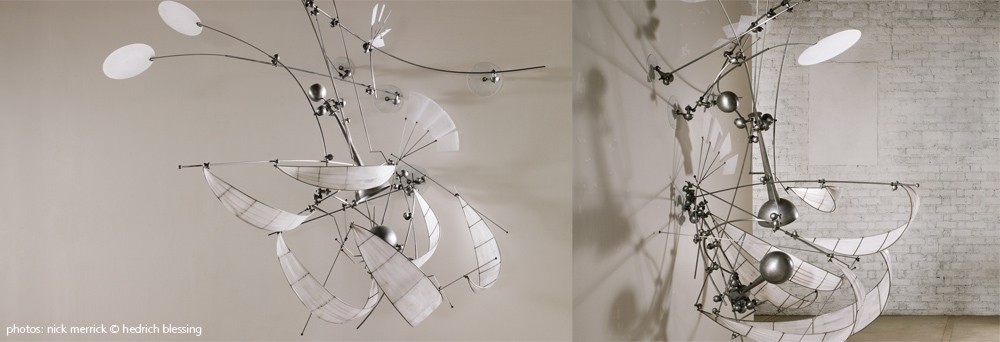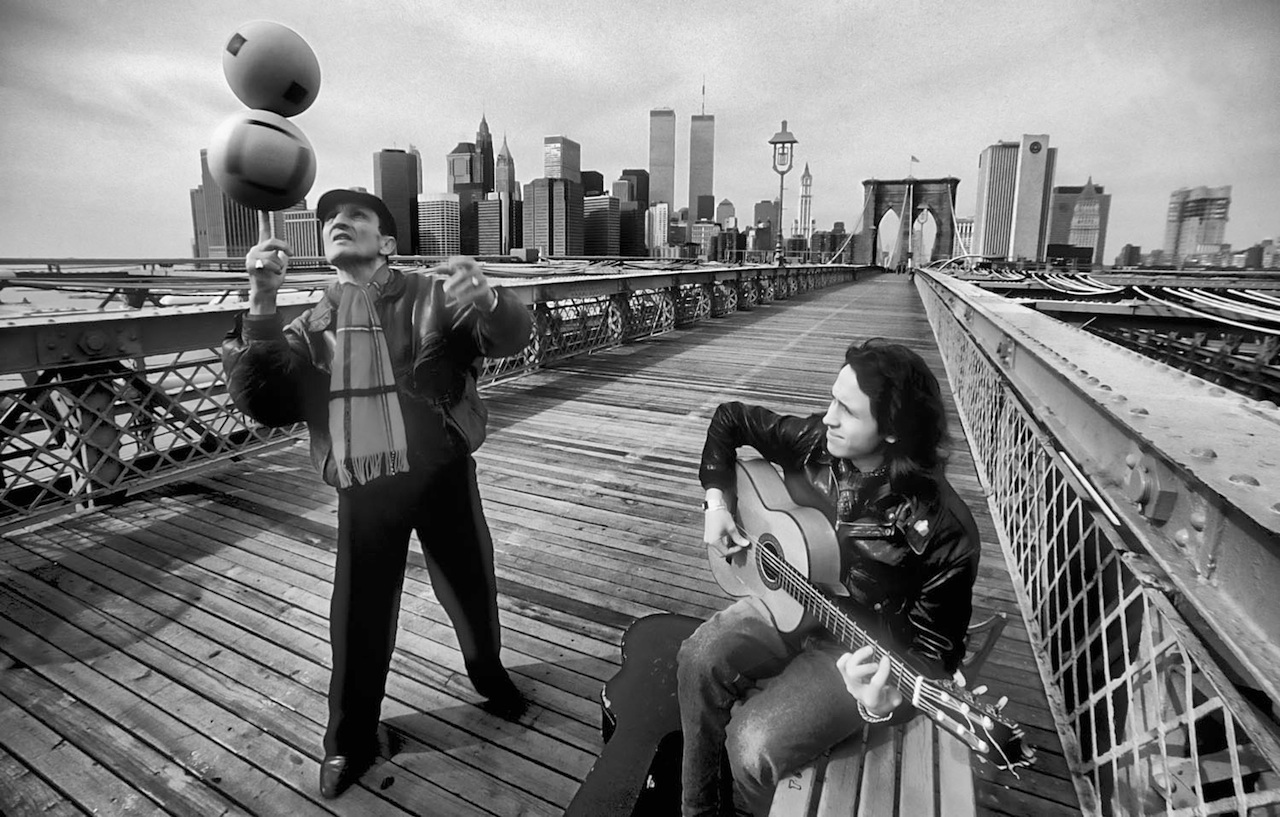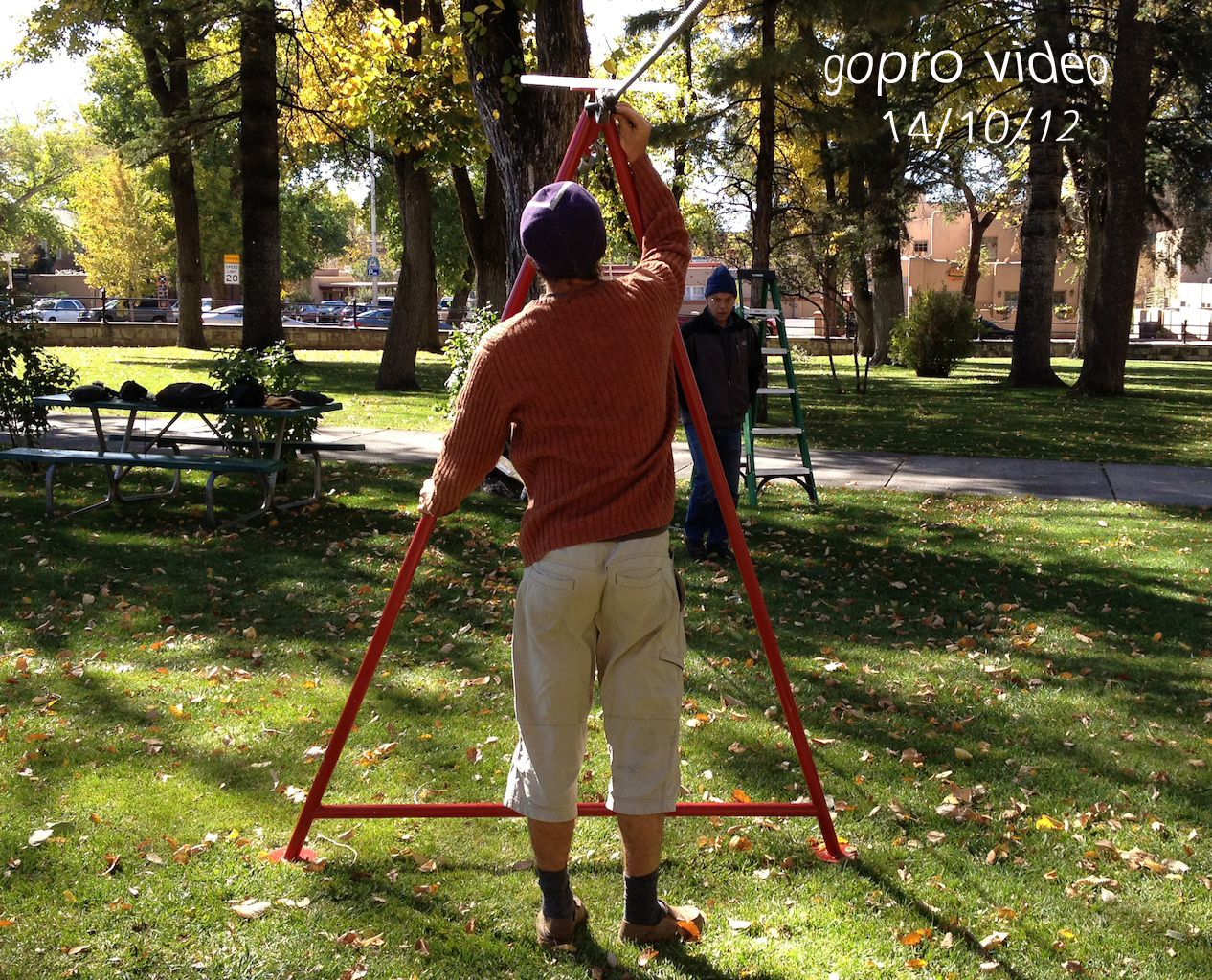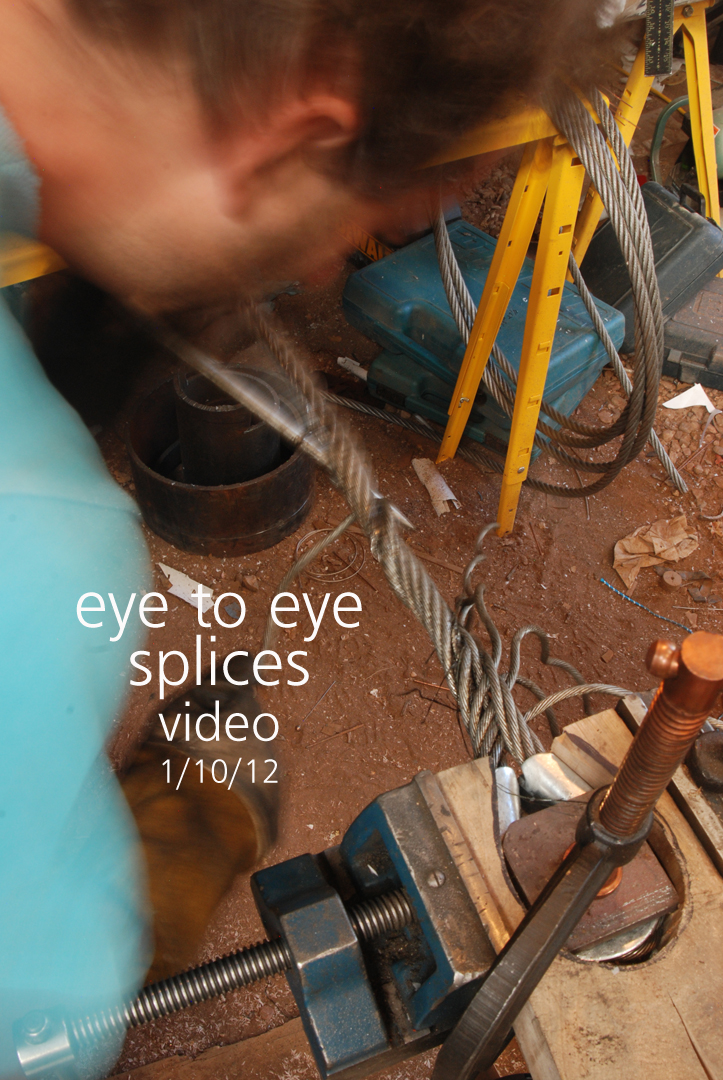All of the great performers in history have spent countless hours consumed in rehearsal. The moments that we see them in marvelous performances are on the very tip of an enormous blade of practice. I was watching a Francis Brunn video of him juggling.
Francis Brunn is considered by many to be the greatest juggler who has ever lived and, interestingly enough, a patron to Philippe Petit. He funded Petit’s clandestine walk between the towers of the World Trade Center. I watched in a trance as Brunn moved elegantly and acrobatically through space. His movements were so quick and yet so precise as to perfectly balance, bounce, throw, and catch balls in a myriad of combinations, some seeming impossible. This led me to research his life and practice as I was very inspired by his performance. It seems he was mostly self taught as a juggler. Other than having a formal training in acrobatics, he taught and invented most of his art. His sister Lottie, also an ace juggler, said that as a child Francis and she would spend 12 hours a day practicing. His passion for his art was truly tremendous. He speaks of juggling as being primarily creative and exploratory, but also in essence performative.
He once said, “Today when I am rehearsing it is still the same. I still feel limitless – that there is no end to it. There are so many ways of doing things, doing them in a certain rhythm and changing the rhythm – different moments to wait and different moments to push. You cannot learn this by just going into a hole – you must gain experience in front of audiences.”
I have come to a point in my rehearsal upon the wire and the structures I have built/rigged that I am able to go forward and start performing. The essential outcome of my studio project was to perform upon structures which I build.
I have built a simple low wire rig. It consists of two A-frames made of steel tube with small plexiglass platforms on top which I can stand and rest on.
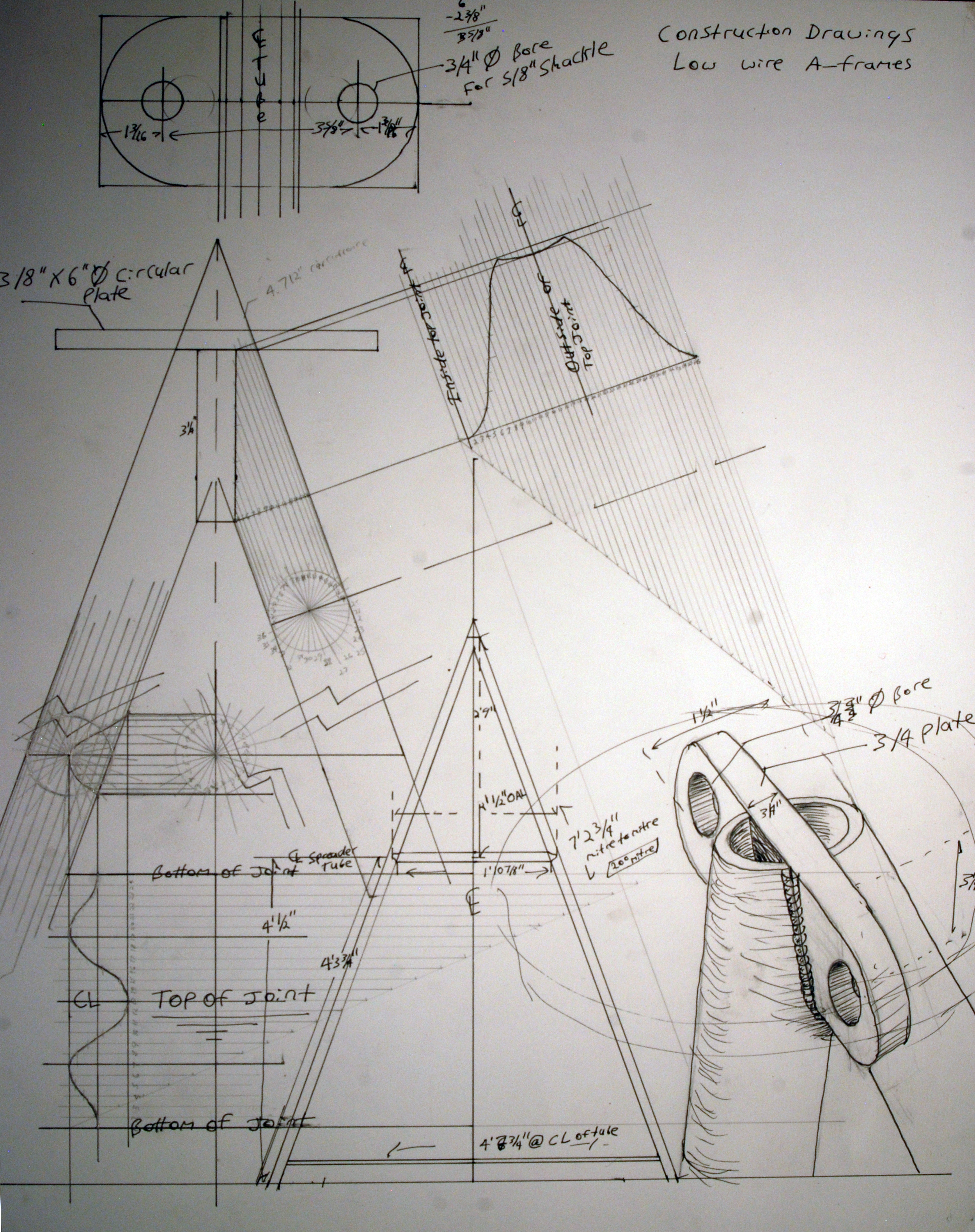
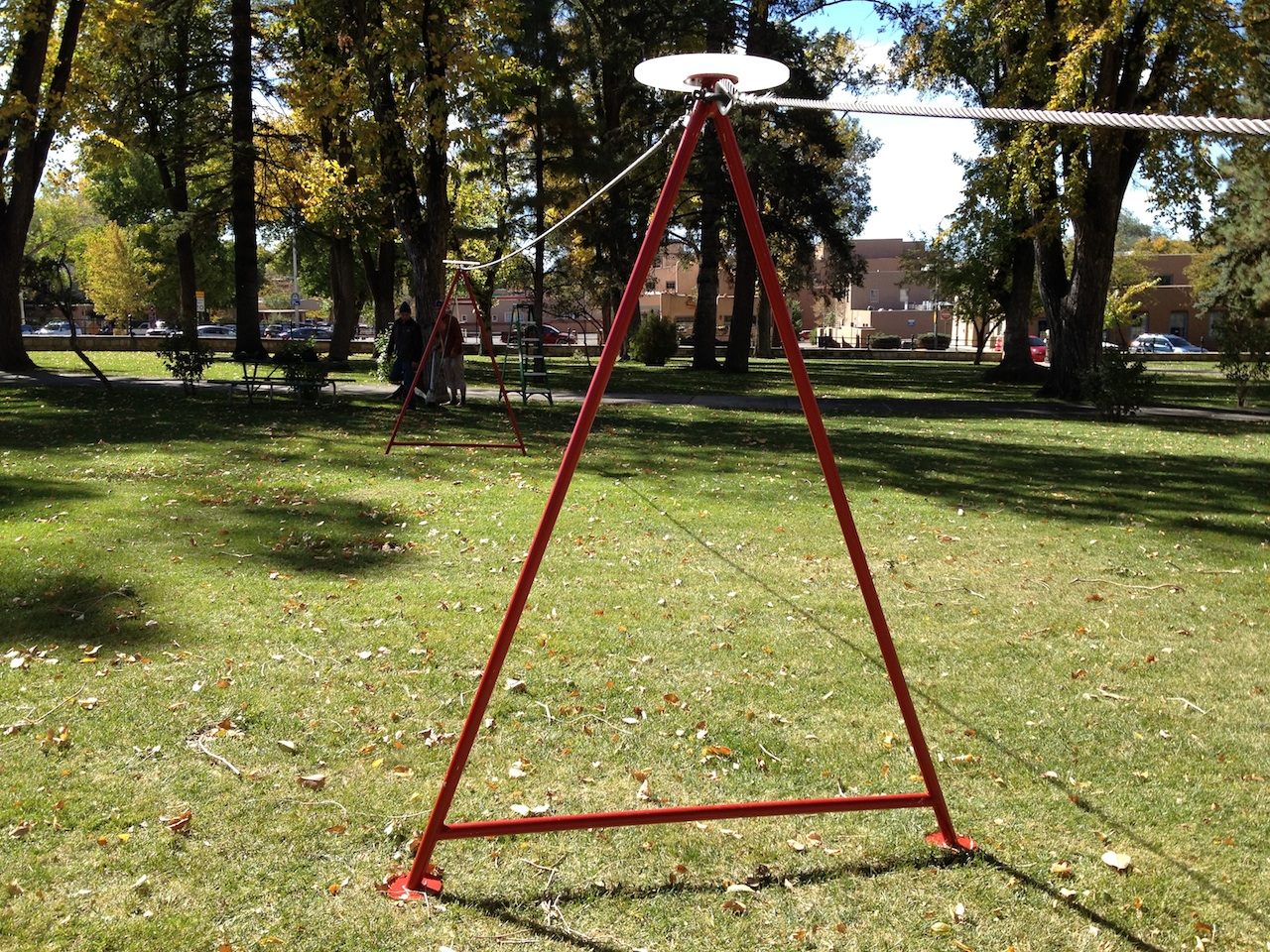
I engineered the A-frames to be as light as possible, pushing the 1 1/2” tube to its compressive limit. Any taller and I would have had to make the frames from larger tubes.
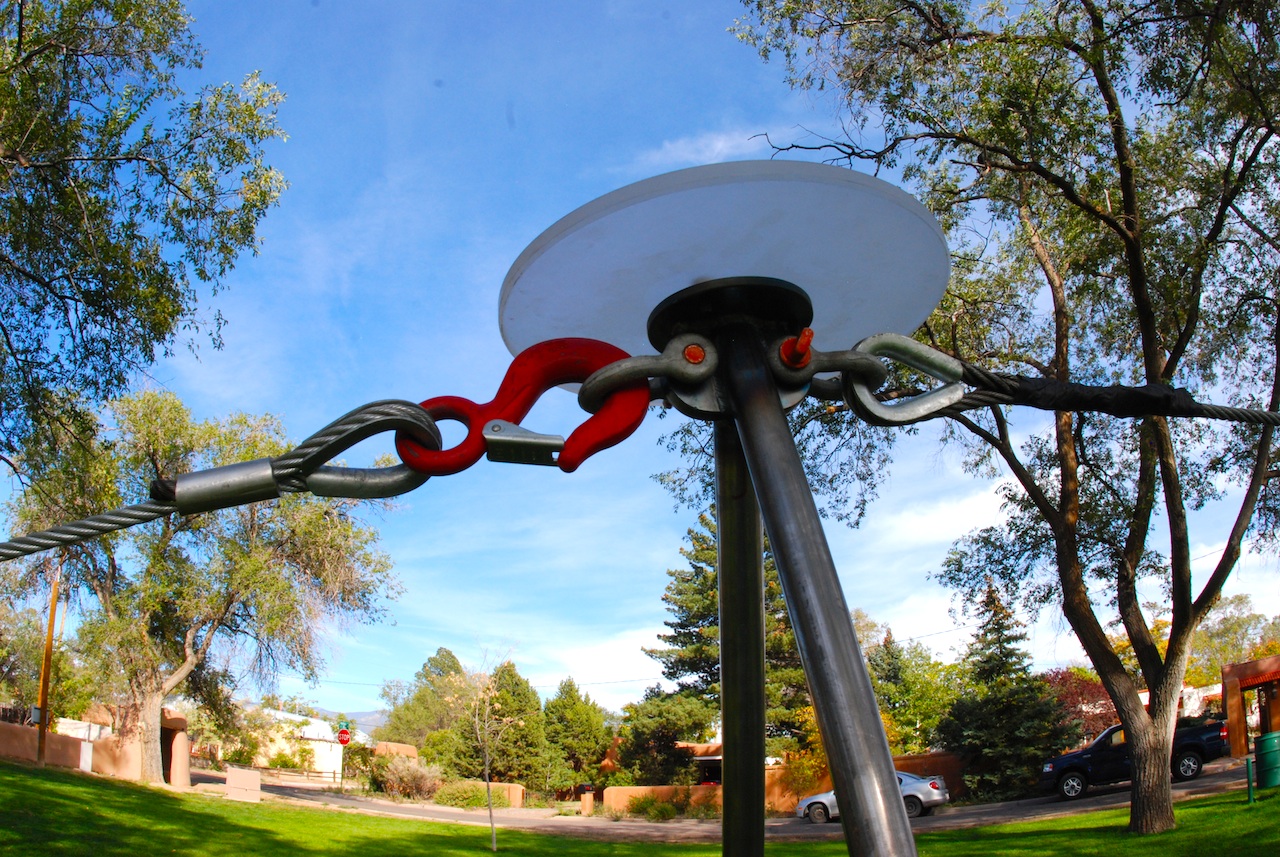
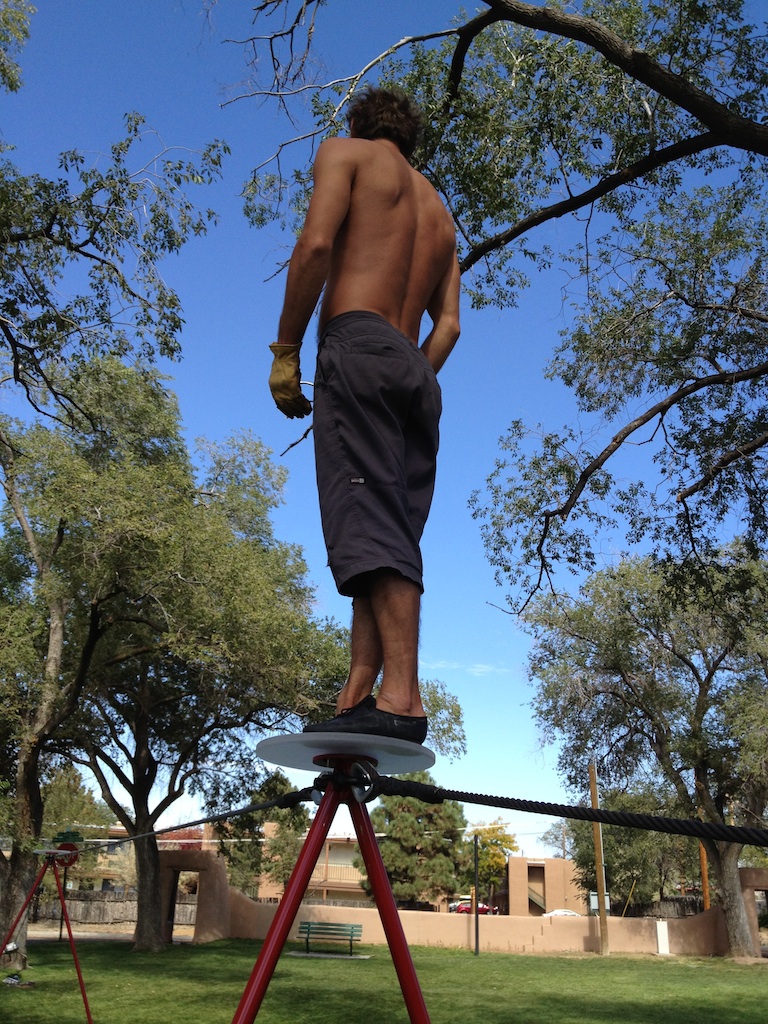
The wire is about 7’ feet above the ground which gives me the opportunity to explore not just walking on the wire, but hanging from it and spinning around it like an acrobat. Its height lends to the performative nature of the apparatus as the wire is over head, like an elevated stage.
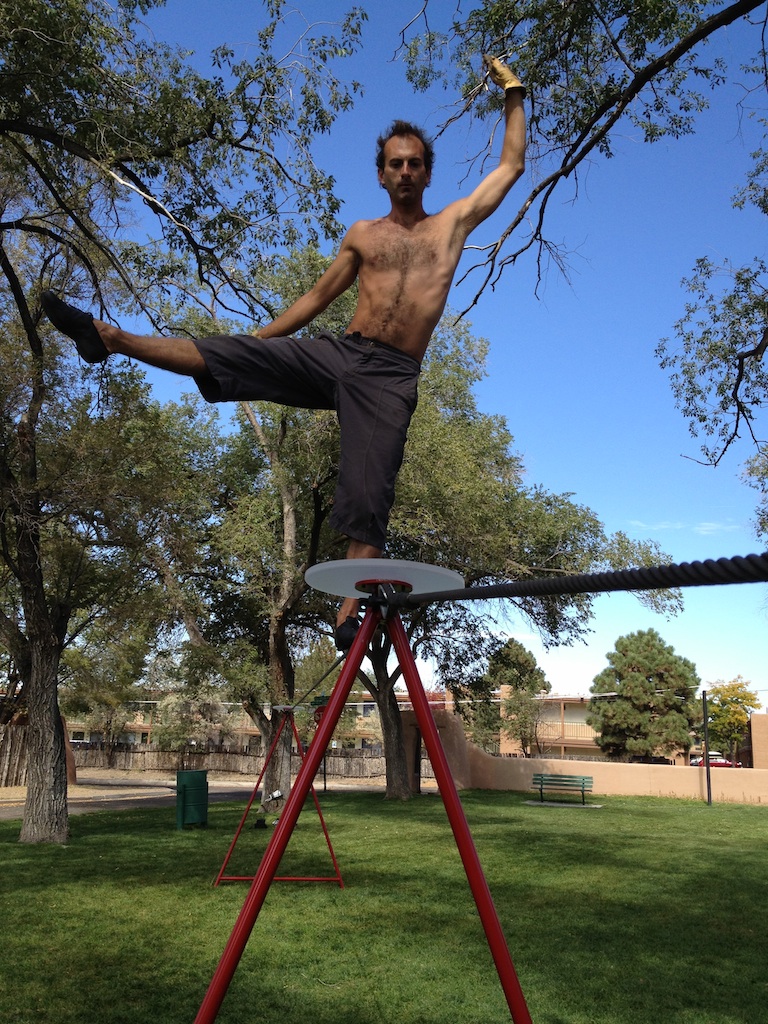
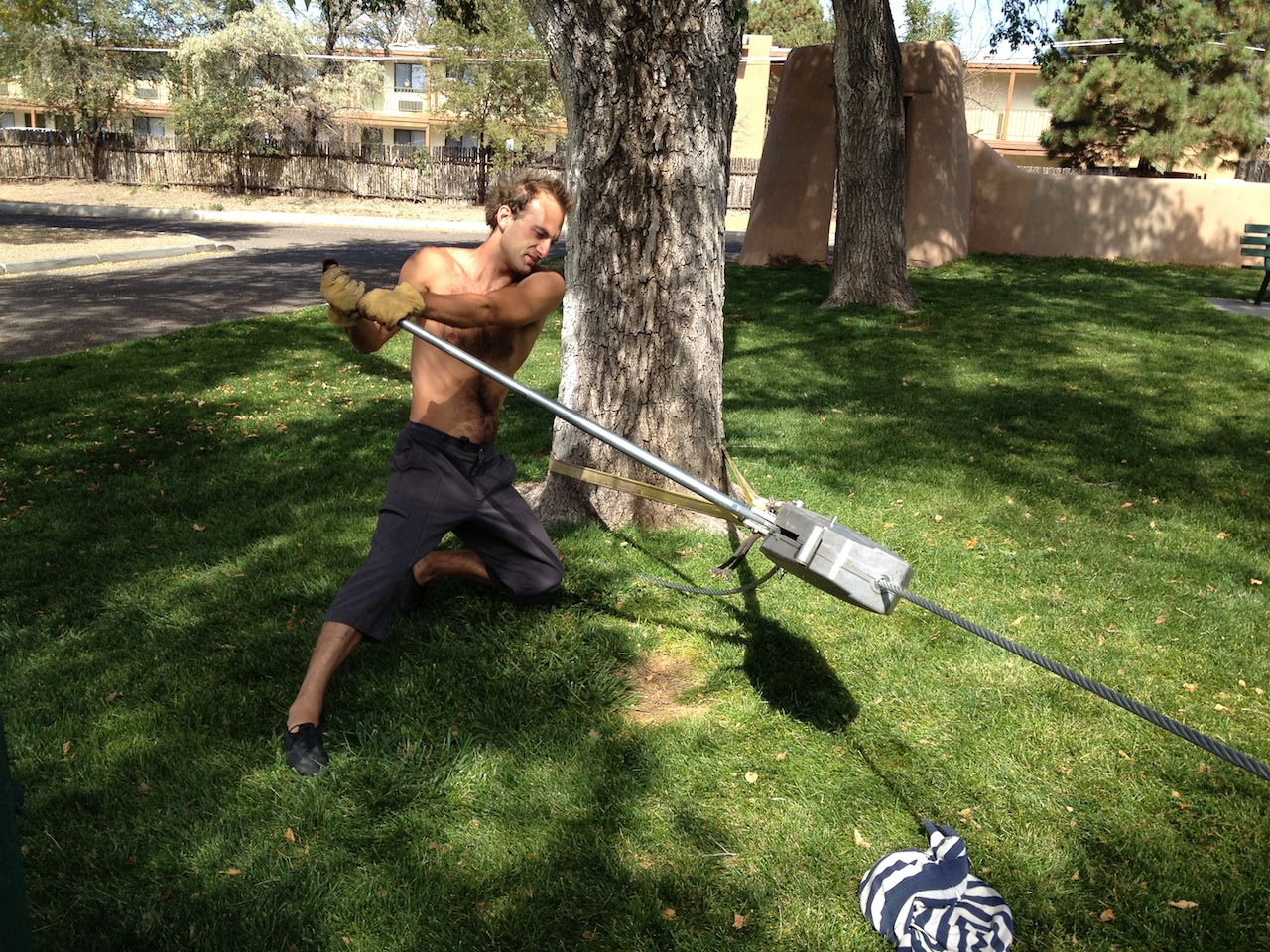
So far I have taken it to several parks and worked on it for some time. People stop and watch. I imagine a wire walker on an over head wire is an alien sight in a public park in Santa Fe. Many people stop their cars and watch for several minutes. I have to be focused to not watch being watched because when I do, I easily lose balance. But since I am used to walking on the wire in total solitude this is a new challenge for me. Also dogs seem to be interested. Some bark and whine to the dismay and apology of their masters, others sit very still and just watch, some for a long time. This has brought up some conversations with their masters and we wonder what they must see or think?
Today I used a GoPro camera and walked on the low wire at a beautiful park in downtown Santa Fe. I put together a short video so that you can have a sense of what it is like to play on the wire. I especial like the moments when I spin around the wire and am playing under it. I am really excited about playing more with the little GoPro and of course learning more about video editing.
I also have returned to working on my high wire after 5 weeks. My first steps were uncertain. Why am I doing this? This is not fun, I want a net. Why, why do this when I could die for a silly reason? I come to a partial answers. To offer oneself totally is beautiful. To realize that our life energy is not ours to own only to borrow and for an unknown duration. For me nothing has become as stirring as walking on a thin weave of metal fibers stretched to the point of singing, over a void of nothingness in a fierce conquest of the useless. The dance of imbalance, graceful and calm, hypnotizes a storm of evolutionary terror.
The high wire is difficult to explain, its danger often seen as the realm of a dare devil or adrenaline junky, a nut with part of his mind dis-functioning, but I don’t find truth in these conceptions. I see it as a simultaneity of action and surrender. Not a controlled preconceived action but a spontaneous action born from a body’s understanding of balance on wire. If I silence my mind enough the body will carry itself as it needs. If you begin to think that you are out of balance (which in fact you always are to some degree or another) and try to conceptualize your way through balancing, soon you flail about from one side of the wire to the other, arms moving in great arcs and you torso bending and twisting wildly to keep from being through from the wire’s steel back as it trembles, undulates and invisibly and most dangerously rotates underfoot. Everything tenses, your vision becomes blurred and fragmented, fear takes hold and you fight to keep from falling. You wish to be somewhere else, to be held by a lover or friend. Alone you struggle with this pursuance for balance.
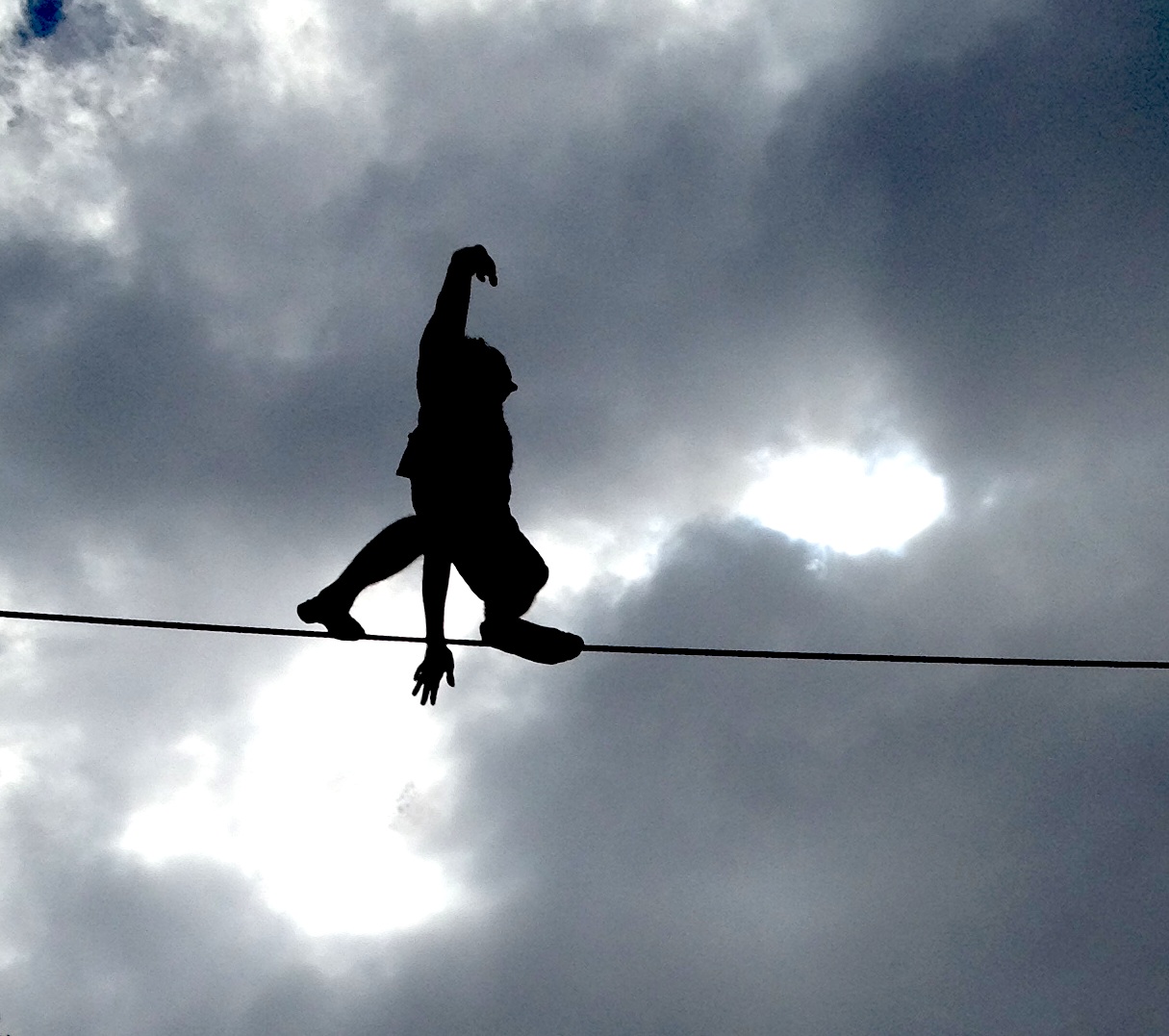
“A void like this is terrifying. Prisoner of a morsel of space, you will struggle desperately against occult elements: the absence of matter, the smell of balance, vertigo from all sides, and the dark desire to return to the ground even to fall. This dizziness is the drama of the rope dance.” Philippe Petit, On the High Wire
But then some part of you lets go. You feel tiny in a universe of wind and space, a speck of life on a strand searching for some love, some light. The lungs fill with air and as they empty you trace the breath’s movement to the very edge of you flesh. Time takes a couple counts longer. In the midst of the tempest, the mind clears and lightness enters. It come from the wire itself into the feet, up the legs, spreading upwards and outwards to the tips of the fingers. The consciousness we feel centrally in our skull spreads uniformly through the body onto the wire and outward to the needles of the pine trees swaying. A seed drifts by the front of your face as light as the air itself. You smile knowing that one day this seed might become a tree so connected to the earth as to never travel again, but for now it wonders the currents of the breeze. Immersed in beauty, light, and air, you forget your fright. Should I be frightened of not being afraid? Is this the moment when I slip too intoxicated with joy to intervene? Yes I am in danger, but perhaps it is safer to forget? To be cautious, but not in fear, I think this is best.
“Leave nothing to chance. Chance is a thief who never gets caught” Philippe Petit, On the High Wire
Also here is a time lapse of me slicing a section of wire rope to be used in the low wire rig.
